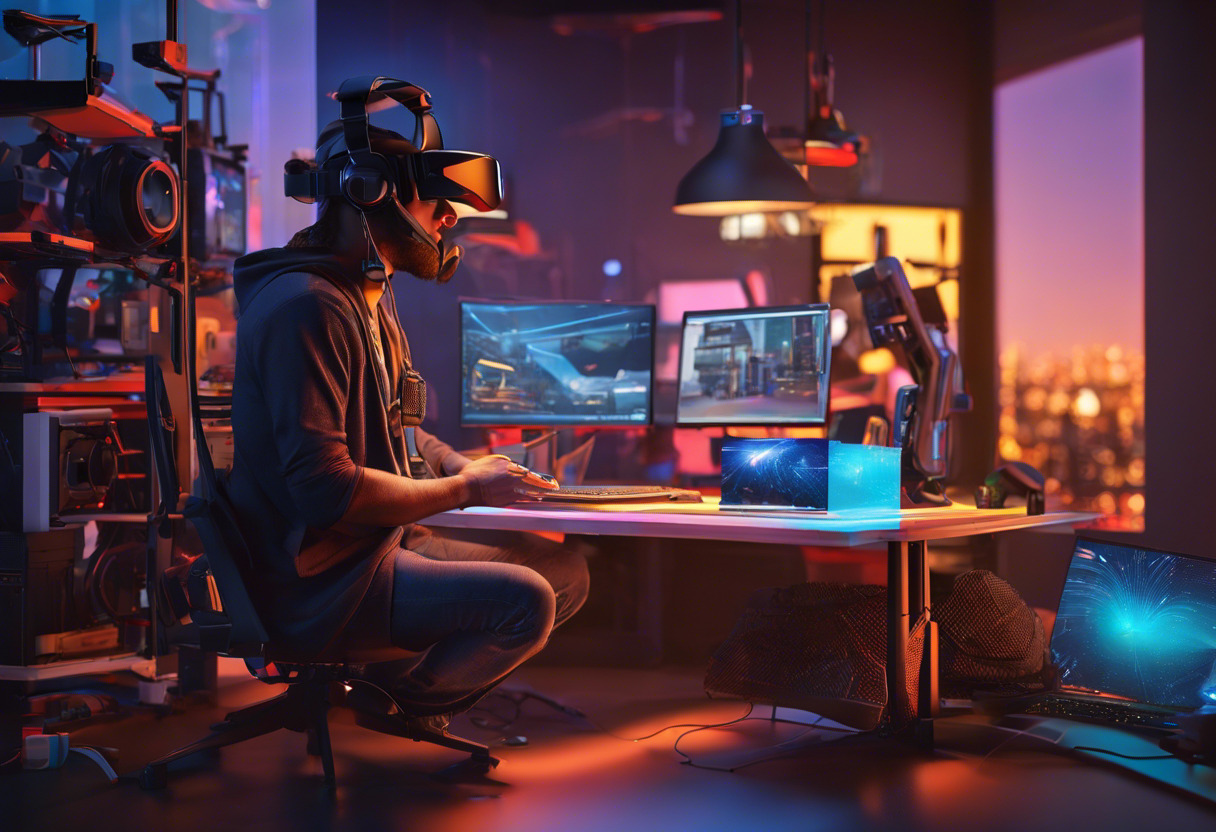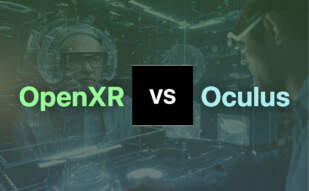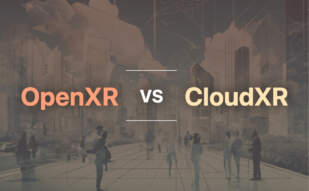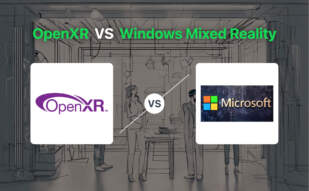Snippet:
OpenXR is optimal for immersive cross-platform AR/VR applications with its seamless integration, broad hardware reach, and consistent updates. However, for intricate graphics needs Vulkan, with its granular control over scheduling, synchronization and memory allocation, and its focus on reducing feature fragmentation, prevails.

Principal Differences Between OpenXR and Vulkan
- Development Focus: OpenXR targets AR/VR applications, Vulkan serves intricate graphics requirements.
- Integration Ease: OpenXR ensures compatibility across diverse devices, Vulkan focusses on reducing feature fragmentation.
- Control: Vulkan provides fine-grained control over scheduling, synchronization and memory allocation.
- Support: Both receive extensive support from tech giants. However, OpenXR has gained public support from a more diverse range of companies.
| Comparison | OpenXR | Vulkan |
|---|---|---|
| Standardization | Royalty-free, open standard. | Cross-platform industry standard. |
| Broad Hardware Compatibility | Unifies AR/VR software development for broader hardware reach. | Enables developers to target diverse range of devices. |
| Portability | Reduces need for porting or rewriting code. | Application Control over GPU details. |
| Release Date | Released OpenXR 1.0 specification on July 29, 2019. | Vulkan 1.3 released recently. |
| API Design | Core API elements: XrSpace, XrInstance, System & XrSystemId, XrActions, XrSession are present. | Provides fine-grained control over scheduling, synchronization, and memory allocation. |
| Extension | Provides extension mechanism beyond core features. | Continually evolving with frequent extensions and additions. |
| Performance | Boosts performance and reduces latency for end users. | Increases 3D graphics performance, enabling support for more complex 3D models. |
| Game Engine Support | Supported by Unreal and Unity. | Independent from game engines. |
| Specialty | Focuses on AR/VR content compatibility across diverse devices. | Graphics and compute capabilities for wide range devices. |
| Contributing Body | Maintained by Khronos Group Consortium. | Kronos Group – Open source and shared software platform. |
| Goal | Designed to solve AR/VR fragmentation. | Combating platform fragmentation. |
What Is OpenXR and Who’s It For?
OpenXR, the child of a vision to unify AR/VR software development, is a royalty-free, open standard that provides high-performance access to augmented and virtual reality. Born on July 29, 2019, this open-source technology reduces the need for porting or re-writing code, bolstering wider reach, reduced latency, and seamless integration with devices and platforms.
Potential adopters include developers targeting VR/AR hardware to ensure diverse device compatibility, tech corporations that benefit from standardization, and even game engine giants like Unity and Unreal. It’s for anyone who values performance, wider reach, and less fragmentation.

Pros of OpenXR
- Open standard, reducing need for extensive code modifications
- Supports diverse device compatibility
- Receives steady updates and extended capabilities
- Backed by major tech corporations
- Boost performance and reduces latency
Cons of OpenXR
- Not an engine itself, necessitating additional tech
- Current reliance on core API extension for future capabilities
- Development constraint to HoloLens2 or Windows Mixed Reality headset
What Is Vulkan and Who’s It For?
Vulkan is a rising star in the world of graphics programming. As a cross-platform industry standard graphics API, it offers developers refined control over scheduling, synchronization, and memory allocation. It supports diverse devices and excels in integrating hardware-accelerated video compression and decompression.
Developers starting their graphics programming journey, those looking to enhance shader synchronization, or anyone seeking to reduce platform fragmentation, will find a worthy companion in Vulkan. Teams needing precision in memory operations will also benefit from Vulkan’s formal memory model – the first for a graphics API.

Pros of Vulkan
- Continually evolving with frequent capability improvements
- Fine-grained control over scheduling and synchronization
- First graphics API with a formal memory model
- Helper in integrating ray tracing into existing frameworks
Cons of Vulkan
- Challenging learning curve, especially for the uninitiated
- Lack of guaranteed development timelines or device support
Code Examples for OpenXR & Vulkan
OpenXR: A Basic Hand Track
This JavaScript-based code snippet uses OpenXR to create a basic hand tracking system. Ensure OpenXR is properly installed and the device has hand-tracking capabilities to run this code successfully.
//limited code snippet for brevity
let actionSet = xrSession.input.createActionSet('default');
let action = actionSet.createAction('track_hand', XRACTIONTYPE.pose, XRHandTracker.JOINTS);
await xrSession.input.updateActionSet(actionSet);
xrSession.input.onframeend.add(() => {
let frameData = xrSession.input.getAction(action);
//.. code to handle the frame data
}); Vulkan: Basic One-Time Command
This C++ code snippet demonstrates a one-time command execution with Vulkan. Ensure Vulkan SDK is installed to run this code properly.
{{
//limited code snippet for brevity
VkCommandBuffer commandBuffer;
beginOneTimeCommands(device, commandPool, &commandBuffer);
//.. buffer copy commands
endOneTimeCommands(device, graphicsQueue, commandPool, commandBuffer);
}} Note: Code snippets are simplified for brevity. Remember to appropriately setup and handle resources depending on the requirements of your project.
OpenXR or Vulkan: The Final Say
It’s decision time: OpenXR vs Vulkan. Who bags the top spot?
Software Developers
In the quest for seamless integration across diverse platforms and devices, developers lend favor to OpenXR. Its royalty-free approach, broad hardware reach, and the reduction of porting code underscore its appeal. Additionally, its robust testing and sizeable support from tech corporations lends credibility.

AR/VR Content Creators
Advocates of immersive, interactive AR/VR experiences incline towards OpenXR. Its proven integration capabilities across multiple devices provide a cohesive working platform for creators. Additionally, OpenXR’s hand and eye tracking extension support offers an immersive edge over its competitors.

Starters in Graphics Programming
Perfect for those embarking on their graphics programming voyage, Vulkan offers a cross-platform industrial standard API, making it a valuable companion for novice programmers. Its contribution to reducing platform fragmentation and the continual addition of functionalities make it a popular choice.

Safety-CriticalSystem Developers
Those working on safety-critical systems may appreciate Vulkan SC 1.0 specification. This streamlines graphics and compute requirements, thus catering to the niche demands of this audience. Also, Vulkan’s formal memory model offers precision in memory operations–an unarguable boon for these developers.

Given their respective strengths, it’s a putative tie. OpenXR sways with its expansive AR/VR support; Vulkan draws attention with its versatility in graphics programming. Final verdict? Choose per your demand prerequisites.
Patrick Daugherty
Content writer @ Aircada. Merging AR expertise with a love for late-night gaming sessions.





